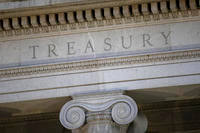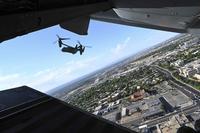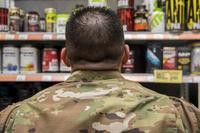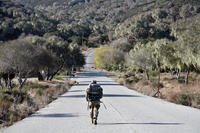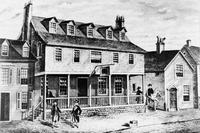Read all about it. Here's the first interview with someone who actually knows why the Pentagon decided to buy the Northrop Grumman KC-45 airborne tanker.
The concept of operations that will govern how the airplane is used played a key role in driving Air Force officials to conclude that the Northrop tanker was much better suited to the military's future. The service wants tankers to operate at a stand-off distance. It wants fighter planes and unmanned planes to be able to refuel two or three times while in the air. This allows them to take off with significantly heavier ordnance loads and to launch several strikes instead of going up once, gassing up, firing weapons and going back to base.
The greater size of the Northrop plane means it can carry more fuel, allowing it to remain aloft for longer periods and to refuel more planes. Once it empties its bladders, it can then refuel and perform reconnaissance missions using a wide array of electro-optical, infrared and other sensors for a significant period of time. In fact, the Northrop plane can stay in the air for up to 18 hours at a stretch allowing it to perform other missions as well, such as carrying a router and becoming a communications hub, though I was told this was not a requirement.
Here are some of the technical factors that led the Air Force to pick the Northrop plane. First, the Northrop tanker's boom pumps fuel at a significantly faster rate than would the Boeing 767 tanker. The faster refueling speed puts the lie to the claim by Rep. Norm Dicks (D-Wash.) that the Boeing plane will consume $35 billion less in fuel than their plane, our source said. The study Dicks cited -- which earned a "D" in quality of analysis from our source -- simply took the difference in the amount of fuel an equal number of Boeing and Northrop tankers would consumer and extrapolated it. The study, by a Boeing consultant, also assumed the fuel consumption of a regular 767, not the Boeing tanker. It did not take into account the greater fuel efficiency of the newer Northrop plane, according to our source. Also, the Northrop tanker's bigger size and ability to refuel at faster speeds means fewer Northrop planes would be deployed.
Second, the Northrop tanker's boom has a significantly larger boom envelope than does the Boeing plane. This gives pilots a much greater safety margin when hooking up at the flying gas pump. It also, our source says, means they can refuel a wider range of aircraft, including unmanned fliers.
The fact that several allies, including Australia, have bought or committed to buy very similar planes means the US has an array of compatible tankers deployed around the world which it can draw on in a crisis, our source said. It also means that NATO and other allies can use common training techniques for their pilots, reducing costs and ensuring interoperability.
Boil all of this down and what you get is a tanker that, our source said, that can support fifth generation fighter aircraft like the F-22 and F-35 and their concepts of operations, our source said. It also means the US would get a plane that is more flexible, more efficient and can serve as the hub for enormously complex and ambitious operations involving a wide array of fighters, sensor aircraft – both manned and unmanned – operating over enormous distances.
"You are taking an airplane [the KC-135] that could only do one mission one time and now you are doing three missions," our source said.
One thing several sources had cited earlier as an important factor -- that the Northrop tanker could refuel itself -- turns out to have been a requirement that both builders met. But the faster refueling speed of the Northrop tanker means those planes can refuel each other more efficiently.

